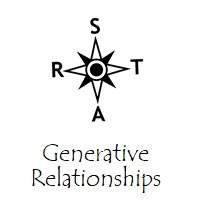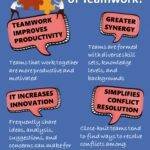
The Purpose of Generative Relationships STAR
With Generative Relationships STAR you can help a group of people understand how they work together and identify changes that they can make to improve group performance. All members of the group diagnose current relationship patterns and decide how to follow up with action steps together, without intermediaries.
The STAR compass tool helps group members understand what makes their relationships more or less generative. The compass used in the initial diagnosis can also be used later to evaluate progress in developing relationships that are more generative.
In the organizational context, we work in groups for various reasons. For example: developing new products, realizing a company strategy, or doing specialized work for a department (Finance, Marketing, Sales, etc.).
Most likely, you’re not part of only one group. You can be engaged in multiple groups with different purposes simultaneously.
Within a group, each person has their own priorities, ambitions, and goals. It’s quite complex, to make the sum of all the individuals a successful group. This is where the STAR compass tool can play a useful role.
Four Structural Elements
1. Structuring Invitation
- Invite participants to assess their working group or team in terms of four attributes:
S Separateness: the amount of diversity in perspective, expertise, and background among group members
T Tuning: the level of listening deeply, reflecting, and making sense of challenges together
A Action: the number of opportunities to act on ideas or innovate with group members
R Reason to work together: the benefits that are gained from working together
- Invite them to jointly shape action steps to boost generative results
2. How Space Is Arranged and Materials Needed
- Tables for small groups of 4, with a STAR compass graphic and pens for each individual
- A STAR compass graphic on a flip-chart page for each small group
- A STAR compass graphic on a flip-chart page for the whole group
3. How Participation Is Distributed
- Everyone in a working group or team is included
- Everyone has an equal opportunity to contribute
4. Sequence of Steps and Time Allocation
- Participants individually assess where the team is in regard to each of the four elements (5 mins.):
S How diverse are we as a group? Do we draw out our diverse perspectives among members?
T How well are we in tune with one another?
A How much do we act together?
R How important is it that we work together? How clear is our purpose?
- In small groups, participants place a dot along each compass point, then talk with their neighbors (1-2-4) about their placements, looking for consensus and differences. 5 min.
- Small groups decide what type of results are generated by the pattern of interaction they have identified (e.g., high Tuning + no Action = we get along well but accomplish little, high Action + low Tuning = routine results with no innovation, high Tuning + high Separateness + high Action + low Reason = many false starts, etc.). 5 min.
- In small groups, brainstorm action steps to boost elements that need attention. 5 min.
- Whole group assembles list of action steps and decides “What first steps can we take right now?” 5 min.

Purposes and Objectives
- Improve the performance of a team
- Help a team become more self-managing and autonomous
- Sharpen the purpose and identity of the group
- Help people step away from blaming individuals and move toward understanding their patterns of interaction
- Combine “diagnosis and treatment” without separating the planners from the doers
- Reduce frustration of people not happy with team dynamics and results
Tips
- Work up from the individuals to pairs, then table conversations
- Avoid making right or wrong judgments about where people assess the team
- Encourage team members to research, organize, and act on their own remedies
- Finish the activity with at least one specific action for each participant
- Make sure that who is going to do what by when is clear for all
Examples
- For a strategy retreat, focusing attention on group dynamics and results
- For deciding the composition and purpose of a new team or task force to be formed


